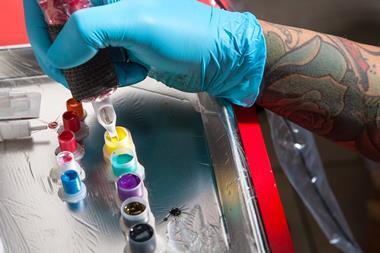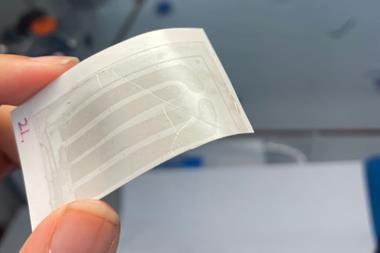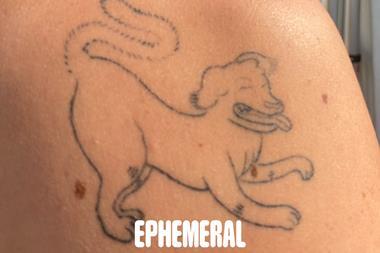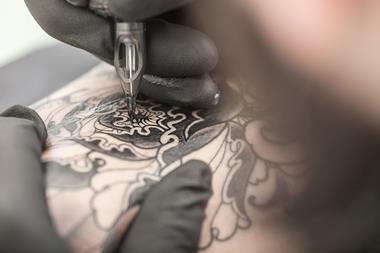Several common tattoo inks sold and used in Europe contain pigments banned under the region’s chemicals regulatory framework, according to new analysis out of John Swierk’s research group at Binghamton University in the US. His team is urging the industry to develop improved and standardised manufacturing protocols.
Specifically, the chemists investigated five green and five blue tattoo inks from five separate manufacturers that are distributed in Europe and marketed as being Reach (registration, evaluation, authorisation and restriction of chemicals) compliant. Reach not only forbids certain pigments but also mandates that all tattoo ink labels provide an accurate ingredient list with relevant hazard warnings.
Only one of the 10 inks analysed by the Binghamton group was Reach compliant. Nine contained material not listed on their labels.
Tattoo inks available in Europe are subject to stricter regulations than those in the US and other countries. In 2022, certain hazardous substances in tattoo inks, including the pigments Blue 15:3 and Green 7, were effectively banned under Reach over concerns that they cause cancer or genetic mutations. Four of the inks that Swierk’s team analysed contained Green 7, and they found Blue 15 in two of them but were unable to determine the particular polymorph of that pigment.
Regarding the EU restriction on the use of Blue 15:3 in tattoo ink, the chemists are now arguing that published methods using Raman spectroscopy are unable to distinguish between different Blue 15 polymorphs, highlighting a major challenge for Reach compliance. The Binghamton researchers underscore the need for a standardised protocol to differentiate between them in a manufacturing setting. They also raise the broader question of why only Blue 15:3 was banned under Reach while other polymorphs of that pigment were not.
The researchers also uncovered ingredients in some of the inks that are cause for concern, although not explicitly banned by Reach. These include polyethylene glycol and propylene glycol. Meanwhile, butylene glycol – thought to be a safer alternative to propylene glycol – was listed on a label of one of the inks but was not detected in any of them. In addition, one carrier solution contained isopropyl alcohol at an apparent concentration that is forbidden under Reach.
Swierk’s team’s previous study in this area, published earlier this year, examined tattoo inks from nine US manufacturers and discovered that for more than 80% of them there were major discrepancies between their ingredients and their labels.
References
K Moseman et al, Analyst, 2024, DOI: 10.1039/d4an00793j

















No comments yet